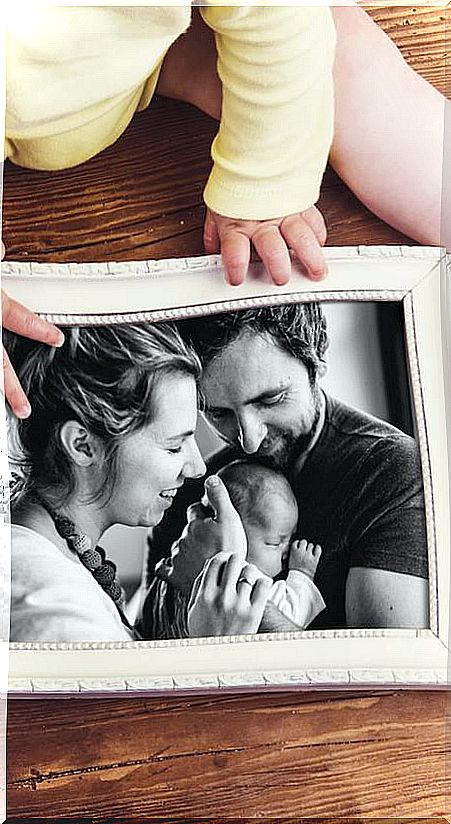Avoidant Attachment, Origin Of Emotional Disconnection
The feeling of abandonment in childhood carries very negative emotional consequences that end up being reproduced with their own children.

In a previous article, we already talked about Attachment Theory and the different types of attachment that babies develop according to the quality of care and attention they receive from their mother or their main attachment figures. In that text we saw what attitudes favor a secure attachment and what benefits they entail in the self-esteem and emotional health of children and adults.
Unfortunately, not all babies are lucky enough to have loving mothers who are attentive to their needs. Mary Ainsworth, thanks to her tool for observing mothers’ interactions with their babies known as the “Strange Situation,” found that almost a quarter of mothers did not consistently and continuously attend to the needs of their babies. This group of mothers in the Ainsworth study were distant and insensitive to the demands of their children.
Avoidant attachment: repressed needs
Babies with this type of mother showed little interest in her during the entire observation process. Not even when the mother left the room did they show obvious signs of anxiety. Neither when their mother returned to the room did they show any kind of emotion.
Indeed, these children were indifferent to the presence of their mother. However, it was found that their heart rate was high, which suggests that they were not having a good time in this situation and that what was really happening is that these babies were inhibiting their physical manifestations to avoid showing their feelings.
The little ones did not seem affected, but as they say, the procession goes inside. Those babies did not express their anxiety, but kept it repressed within them and this inhibition, as we will see later, is the origin of the development of behavior patterns that are very detrimental to emotional health.
Repression process
Ainsworth deduced that these babies, finding that their demands were not attended by their caregivers, had learned to repress the expression of their needs. The baby, within its scarce resources, always looks for a way to protect itself. In this case, feeling neglected, their strategy focused on stopping seeking help to withdraw on themselves.
At the same time, by showing many of them (paradoxically) very sociable and pretending that they are easily related to strangers, a false image of independence is created around them.
However, in reality, all the relationships they have in their lives are very superficial. These children avoid all kinds of emotional contact, they do not feel comfortable in intimate relationships with other people.
Avoidant attachment in adults
In consultation, already with adults, I often hear phrases such as “why open up to others, if no one listens to me” or “if I trust others, I know that sooner or later they will abandon me.” These people, self-sufficient (apparently), by avoiding being overly attached to their partners, tend to only maintain sporadic and shallow relationships.
This apparent independence, what really shows is the armor that they created in their childhood as protection against the neglect they suffered from their caregivers. As a consequence of their previous experiences of abandonment, these people feel that they are going to be rejected again and they protect themselves under this false image of rational, impassive and self-sufficient adults.
In the long run, the most devastating aftermath of a lifetime of hiding emotions is disconnection from oneself. These people are unable to listen to their own needs. They have a hard time putting words to their feelings and emotions.
A girl told me in consultation: “I only know how to say if I am good or bad, but I cannot specify more. Sometimes I don’t know if I’m angry or sad. It is impossible for me to define what I feel ”.
Cliché repetition
All of these negative effects of avoidant attachment become much more apparent when we raise our own children. If in our childhood they did not take care of our needs, today, we do not know how to properly care for our own babies.
If as children, we did not learn and assimilate a healthy model of secure attachment, as adults, we present immense difficulties to adequately take care of all the needs of our little ones.
Alba’s case
This was the case of Alba, a girl who came for consultation because she felt unable to take care of her newborn baby. It was not that he did not know how to feed or change his diapers, but that he felt an unbearable anxiety when the baby cried for his attention.
In times of greatest tension, he told me, he was always afraid of completely losing control. Alba was scared, and faced with this situation (of lack of control) new for her, she sought help to understand what was happening to her.
The young woman told me that her mother, an important businesswoman, returned to work within two weeks of having her. Her father, a co-owner of her mother’s business, didn’t take a day off when she was born. Every morning, before Alba woke up, her parents went to work and she stayed in the care of a relative or, when no one in the family was available, someone they hired sporadically.
Alba’s parents came home at dinner, so they only spent a few minutes with her a day. In addition, in those few moments that the girl shared with her parents, she always felt that their heads were elsewhere, not with her.
Refugee in herself, to survive, Alba became tough, struggled to study and achieved a successful professional career like that of her parents. With the passage of time, her first baby arrived and the closeness with her daughter caused the young mother to jump back in time.
By feeling her baby, living the same situations and going through similar circumstances, Alba reconnected with the anxiety and fears she felt when she was little and no one took care of her.
However, what at first seemed like a problem, finally marked the path to Alba’s healing. The anxiety she felt when her daughter cried helped her connect with the anxiety that she felt as a baby when she felt lonely and neglected.
Understanding the terrible helplessness that she suffered as a child helped her connect with the emotions of her baby when he incessantly claimed her at night. In reality, his suffering, his emotions, had not disappeared with time, they were simply hidden waiting for him to rescue them.
With her therapeutic work, Alba was finally able to cry and heal her past, and thus, regain the connection with her baby. She no longer saw her daughter as an enemy, but as what she really was, a baby in need of her care.
Conclusion: reversing the chain
Avoidant attachment can become an infinite chain of discomfort and emotional imbalance transmitted from generation to generation. These neglected babies, in turn, become fathers and mothers who do not know how to care for their own children and, if it is not ended, the cycle begins again and again.
But examples like Alba’s show us that the links in this chain can be broken. Your daughter will step alongside securely attached babies who grow up with high self-esteem and who, as adults, will raise their own babies in a more loving way.









